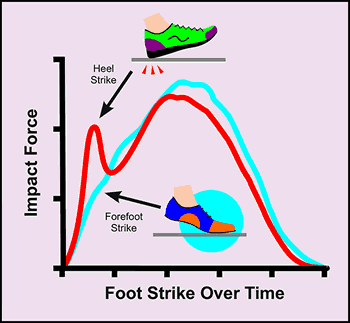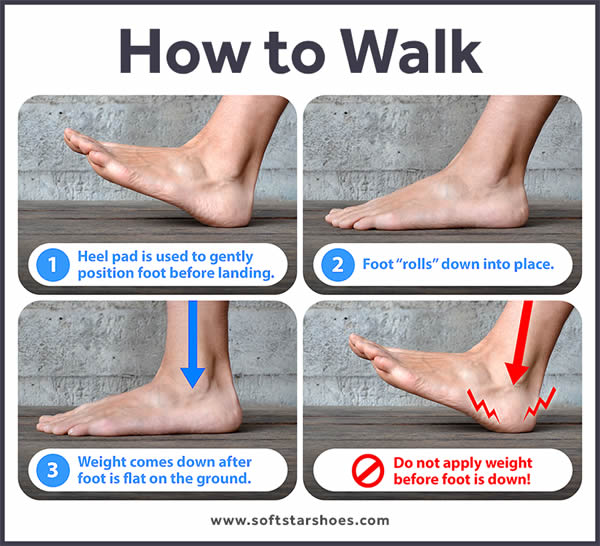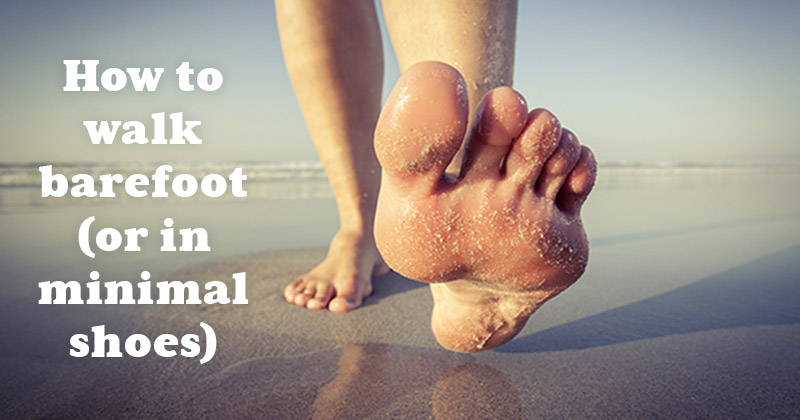Walking 101: How to Walk Barefoot (or in Minimal Shoes)
I know, the title of this post may sound condescending. After all, you probably have a lot of experience walking—several decades, even. But bear with me, because even though I’ve been walking since the late 1970s I recently learned I wasn’t pulling it off as well as I thought.
I had the honor a couple years ago to take a series of running workshops with two gurus in the field of minimalist and barefoot running: podiatrist and Correct Toes inventor Dr. Ray McClanahan and physical therapist Dr. Sanatan Golden. One class, led by Dr. Golden, focused entirely on walking. While this was not what I expected to cover in a running workshop, it turned out to be one of the most beneficial sessions for me.
It also answered a question that had nagged me for some time: how should I walk while barefoot or in minimalist shoes?
Not Like Running
When barefoot running became all the rage a few years ago, many people became conscientious of landing with a forefoot or midfoot strike as part of their running form—myself included. Studies show this significantly reduces the impact force that shoots up into the knees and hips on a heel strike, and going barefoot or wearing minimalist shoes makes the change much more practical.

It would seem logical that walking would be the same way, right? After all, if landing forefoot on a running step made such a notable difference in impact, then wouldn’t the same be true at a slower pace, too? Possibly, but anyone who has ever tried landing forefoot at a casual walking speed will immediately realize how awkward it feels. It requires you to almost walk on your tippy-toes, and it guarantees funny looks as you struggle to stroll down the street.
And that’s why I still walked with a heel strike even after I started forefoot running in Softstars. I felt a pang of pain in my heel with every step, but I didn't see any other alternative... until the workshop.
How to Walk
In the class, Dr. Golden showed us that a forefoot strike is indeed very practical when you're running because your torso is leaning forward and your center of gravity comes down over the front of your foot with every step. While walking, however, you are not leaning forward and your weight is coming from behind your feet. You then have the opportunity to use your heels in a different way. Specifically, your heel pad should touch the ground gently, then act as a guide to lower the rest of your foot down. Only then, when the toes are flat and in place, should you let your weight down.
And this is why we have padded heels—not for running, but for walking.
That’s it… the secret to healthy barefoot/minimalist walking:
- Use your heel to gently position your foot landing.
- Roll your foot down into place.
- Only after your entire foot is flat on the ground, apply your weight onto it.
If you’re like me, and most people who grow up wearing shoes with thickly cushioned heels, then you’ve probably developed the nasty habit of doing this in reverse by letting your weight down on your heel as soon as it comes into contact with the ground, before the rest of your foot is in place. Doing so adds excessive pressure onto your heel that can lead to pain or injury. Your whole foot should be absorbing that weight, not just your heel. Here's a little infographic showing the process:

Making It a Habit
I didn’t find it hard to change my walking pattern when I moved slowly and stayed focused on it, but as soon as I picked up speed to a normal pace and let my attention drift elsewhere I quickly reverted back to the ol' heel pounding. After all, this whole process happens repeatedly in a fraction of a second. Dr. Golden gave us a few drills to help us make it a habit (shown in the video below), but the single best aid I had was this visualization technique:
Imagine you’re walking on ice.
When walking on slippery surfaces, we often unknowingly switch to this foot-first-weight-second technique. That happens because slamming your weight down with your heel puts the pressure down at an angle, leaving you susceptible to slipping. Placing your foot down before your weight, however, gives you a nice base for an almost vertical application of your weight, and makes slipping less likely.
Another tip: If you have trouble doing this then try bending your knees ever-so-slightly more than usual. It's not very easy to walk gently if your knees are over-extended, as many people do.
It took some practice, but I’ve now made this new method my natural gait. And the heel pain I used to feel when walking barefoot or in my Softstars is completely gone.
If you'd like more details, or want to learn the drills we used to make this walking technique a habit, then you're in luck. A colleague of Dr. McClanahan recorded the whole class and posted it on the Correct Toes Youtube channel for all to see:
(I'm the tall lanky guy with the afro in the red shorts)
What do you think? Do these tips help you? Do they sound absurd? Is there another way to walk? Let us know!
Related Posts:
- Study: Shoe Orthotics Do NOT Prevent Back Pain, But Exercise Does
- 8 Benefits of Walking and Running Barefoot on Sand
- We're Staging a Flip-Flop Intervention!

Martin is a lifelong runner who began wearing minimalist shoes over 10 years ago when he found they alleviated his chronic foot pain, which eventually disappeared completely. He further studied proper running form through a series of workshops taught by Correct Toes inventor, Dr. Ray McClanahan DPM. Martin has collaborated with several health care professionals to collect and share peer-reviewed studies that show the benefits of minimalist footwear. In his personal life, Martin loves living in the Pacific Northwest because it allows him to enjoy a variety of outdoor activities year-round, including hiking, cycling, rock climbing, surfing and snowboarding.



It's always good to be prepared for the question of where my shoes are, as inevitably someone asks...it is a great way to start a conversation.
Its funny, no matter how often I do it, it always feels so weird leaving my sandals at home...
I've only had one moment where I wished I had worn my sandals...While attending evening classes, the college is very deserted...perfect for walking around barefoot. The one night I decide to do that turned out to be grad night...so when I got there the place was as deserted as usual, but after class the main halls were filled with 1000+ people!!! with only a few students in their shorts and flip flops making their way through the well-dressed crowd (and one barefoot guy!). besides feeling a bit out of place I was a little worried about having my toes stepped on. In fact one employee warned me that it wasn't a good idea not to have shoes on... Once I made it out to the bus stop, after my heart slowed back to its normal beat, I realized what a cool experience that was. My ultimate goal. Go on a Hawaiian vacation and not wear shoes the whole time!
I don't know which way to choose